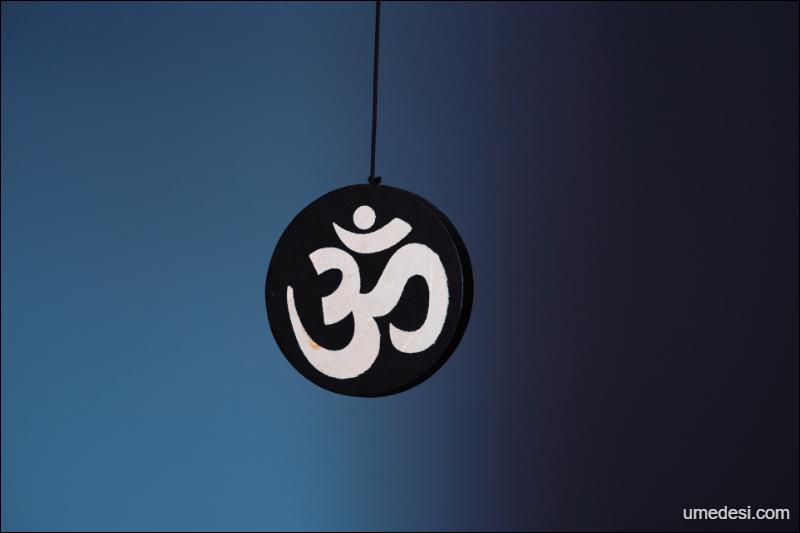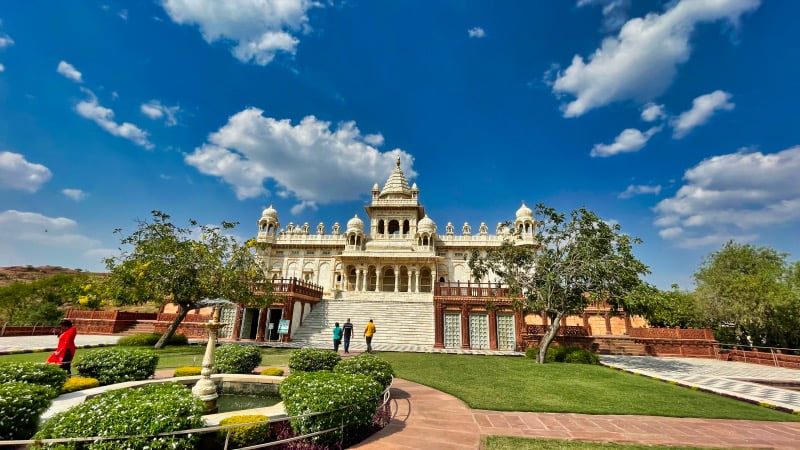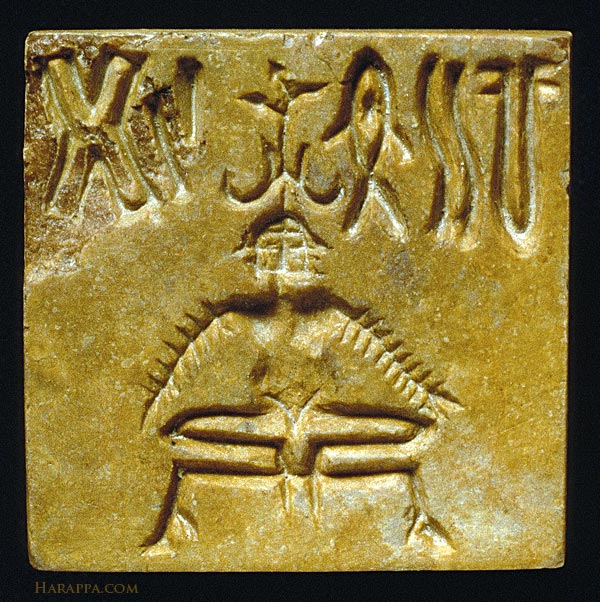By Desis, for Desis and Everyone Else!!
What’s a Desi?
The term “desi” is a term that is commonly used by people from the Indian subcontinent to refer to themselves or other people (origin or ancestry) from the region.
The word “Desi” is derived from the Sanskrit word “desh,” which means “country” or “region” or “homeland”. (‘Sanskrit’ word ‘Desh’? What is Sanskrit?)
Did you ever wonder:
What is Indian culture like? Learn more!
Interesting facts about India you didn’t know about!
Explore Indian customs.
Traveling to India? You are in for a treat – Explore here!
Here are a few articles from this site – use the menu at the very top of this page to discover many more…
Desi people can come from countries such as India, Pakistan, Bangladesh, Nepal, Sri Lanka, Bhutan, and Maldives. The term can also be used to describe aspects of Indian origin culture, including food, clothing, music, and art.
Om or Aum?
Summary
“Om” or “Aum” is a sacred sound with deep spiritual and cultural significance in Indian traditions. It represents the ultimate reality or divine essence. Chanting or saying “Om” is believed to facilitate spiritual growth, self-realization, and connection with the divine.
The benefits of chanting “Om” include relaxation, stress reduction, improved focus, and a sense of harmony and balance. It can promote a calming effect, enhance concentration, and deepen the mind-body connection. Chanting “Om” is considered a powerful tool for meditation, promoting mindfulness, and experiencing inner peace.
Scientific research on chanting “Om” is limited, but studies on meditation practices suggest potential benefits such as increased attention, improved brain function, and enhanced autonomic nervous system activity.
Chanting “Om” is a personal and subjective experience, and its effects may vary from individual to individual. It is recommended to approach chanting with reverence, practice with intention, and observe its effects on your own spiritual and well-being journey.
What is Om or Aum?
Om is a sacred sound and symbol that is important in various Indian traditions. It is considered the primordial sound of the universe, representing the ultimate reality, consciousness, and the essence of existence.
The sound of Om is believed to encompass the three fundamental aspects of existence: creation, preservation, and dissolution.
- The elongated “A” sound represents creation, the waking state of consciousness, and the beginning of all things and the initial manifestation of energy.
- The resonating “U” sound represents preservation, the dreaming state of consciousness, harmony, balance, and the continuity of energy.
- The subtle humming of “M” represents dissolution, the deep sleep state of consciousness, the merging of individual with the cosmic divine and the completion of the cosmic cycle.
Together, the three sounds, A, U, and M, merge to form Om, representing the entire spectrum of existence. Chanting or meditating on Om is believed to help connect with the divine, harmonize the mind and body, and awaken spiritual consciousness.
Om is a powerful mantra, a tool for meditation, and a symbol of unity with the divine and the nature of interconnection between all things. It is also widely used in spiritual practices, rituals, and chants in various cultures and traditions across the world.
Why is it important?
Om is an important sound and symbol to Indians because it has deep spiritual and philosophical significance in their culture and traditions.
- Spiritual significance: Om is considered a sacred and divine sound that represents the ultimate reality, or the divine essence. It is seen as a pathway to connect with the divine and attain spiritual enlightenment. Chanting or meditating on Om is believed to help facilitate spiritual growth, self-realization, and a deeper understanding of the nature of existence.
- Cultural heritage: Om is deeply rooted in Indian culture and has been revered for thousands of years. It is found in ancient scriptures like the Vedas and Upanishads, which form the basis of Indian philosophy and spirituality. As a result, Om has become a symbol of Indian identity, cultural heritage, and religious practices.
- Symbol of unity: Om represents the underlying unity of all things. It signifies the interconnected-ness of individuals, the universe, and the divine. Chanting Om is a way to acknowledge and honor this unity, promoting a sense of oneness and harmony among people.
- Meditative practice: The rhythmic chanting of Om has a calming and centering effect on the mind. It helps in achieving a state of deep relaxation, focus, and inner peace. Chanting Om during meditation is believed to enhance concentration, reduce stress, and promote overall well-being.
- Philosophical insights: Om is associated with profound philosophical concepts in Indian philosophy, such as the nature of reality, the eternal sound, and the unmanifested potential. It encapsulates the ideas of existence, consciousness, and bliss. Exploring the meaning and symbolism of Om provides philosophical insights and contemplative pathways for individuals on their spiritual journey.
Om is important to Indians because it represents their spiritual heritage, cultural identity, and provides a profound framework for understanding the nature of reality and the pursuit of spiritual growth and self-realization.
Where or when is it used?
Om is a sacred sound that is used in many spiritual practices, rituals, and prayers in different cultures and traditions. It is believed to have many benefits, including:
- Helping people to connect with their spiritual nature
- Cultivating inner awareness
- Deepening spiritual practices
- Serving as a focal point for devotion, mindfulness, and spiritual transformation
Here are some ways in which Om is used:
- Chanting and meditation: Om is often chanted or repeated silently as part of meditation and mantra repetition. It is believed to help people to deepen their concentration, experience inner peace, and connect with the divine.
- Prayers and invocations: Om is often used as a sacred invocation or opening mantra in prayers and rituals. It sets the spiritual tone and creates a sacred atmosphere for connecting with the divine, seeking blessings, and expressing devotion.
- Yoga and breath-work: Om is frequently incorporated as part of pranayama (breath control) exercises in yoga practices. It is chanted during specific breathing techniques, such as “Om Chanting” or “Ujjayi Breathing,” to enhance focus, energize the body, and deepen the breath-awareness connection.
- Religious ceremonies: Om holds a central place in religious ceremonies, such as pujas (ritual worship), yajnas (fire rituals), and sacred initiations. It is chanted by priests, devotees, or participants to invoke divine blessings, offer gratitude, and create a sacred atmosphere.
- Symbolic representation: The symbol of Om (ॐ) is often used as a visual representation in religious art, mandalas, and sacred objects. It serves as a reminder of the divine presence, cosmic unity, and the essence of spiritual teachings.
Whether chanted aloud or silently repeated, Om is considered a powerful and sacred sound that can help people to connect with their spiritual nature, cultivate inner awareness, and deepen their spiritual practices.

What are the benefits of chanting Om?
Chanting Om can have many benefits, including:
- Relaxation and stress reduction: Chanting Om can help you relax and reduce stress. The repetitive sound can help you focus on the present moment and let go of worries.
- Improved concentration and focus: Chanting Om can help you improve your concentration and focus. The repetitive sound can help you block out distractions and stay on task.
- Increased harmony and balance: Chanting Om can help you feel more balanced and at peace. The sound vibrations can help to promote overall well-being.
- Deeper mind-body connection: Chanting Om can help you connect with your body and mind on a deeper level. The sound vibrations can help you become more aware of your breath, sensations, and emotions.
- Spiritual awakening: Chanting Om can be a powerful tool for spiritual awakening. The sound vibrations can help you connect with your inner wisdom and higher self.
It is important to note that the benefits of chanting Om may vary from person to person. Some people may experience all of the benefits listed above, while others may only experience some of them. It is also important to note that chanting Om is a personal practice. There is no right or wrong way to do it. Experiment with different techniques and find what works best for you.
How do you say Om or Aum?
To say “Om” or “Aum”, follow these steps:
- Find a comfortable and quiet space where you can focus without distractions.
- Sit in a comfortable position, with your spine straight and relaxed.
- Take a few deep breaths to center yourself and calm your mind.
- Begin by exhaling completely and emptying your lungs.
- As you inhale, open your mouth slightly and let the sound “Aaaah” naturally flow out. Feel the vibration starting from the lower belly or abdomen, rising up through your chest.
- Transition smoothly to the sound “Ooooh” as you continue to exhale. The sound should resonate in your chest, throat and mouth.
- Finally, close your lips and make the humming sound “Mmmm” as you fully exhale. Feel the vibration buzzing in your head and throat.
- Allow the sound to naturally taper off and merge into silence.
- Repeat the process, focusing on the smooth transition between the three sounds, “Aaaah,” “Ooooh,” and “Mmmm.”
- As you chant, try to feel the resonance and vibration of the sound throughout your body.
Remember, the key is to chant “Om” with a sense of deep focus, intention, and awareness. The sound should be produced naturally and comfortably, without straining or forcing it. Practice gradually and allow yourself to find a rhythm and pace that feels right for you.
It’s important to approach chanting “Om” with reverence and sincerity, as it is a sacred sound with spiritual significance. Allow yourself to fully immerse in the experience and let the vibrations of “Om” resonate within you.
Are there any studies about the benefits?
While there is limited scientific research specifically focused on the benefits of chanting “Om” or “Aum,” there are a few studies that have explored the effects of chanting and meditation practices in general.
Here are a couple of studies that touch upon the potential benefits:
- “Effects of Om Chanting on Brain Function, Autonomic Nervous System, and Hormones” (by Venkatesh et al., 2017): This study examined the effects of chanting “Om” on brain function, autonomic nervous system activity, and hormone levels. The researchers found that Om chanting led to increased parasympathetic nervous system activity, reduced sympathetic nervous system activity, and improved attention and concentration. It suggested that Om chanting may have a positive impact on mental and physical well-being.
- “The Effects of Om Mantra Meditation on Brain Hemispheric Coherence and Autonomic Nervous System” (by Joshi et al., 2013): This study investigated the effects of Om mantra meditation on brain hemispheric coherence and autonomic nervous system functioning. The results showed increased hemispheric coherence, indicating better communication between the brain hemispheres, and improved autonomic nervous system balance. These findings suggest potential benefits of Om mantra meditation in promoting brain integration and balance.
- A study published in the journal “Applied Psychophysiology and Biofeedback” in 2007 found that chanting Om can help to reduce stress. The study participants who chanted Om for 15 minutes showed a significant decrease in stress hormones, such as cortisol, compared to the control group.
- A study published in the journal “Neuroscience Letters” in 2008 found that chanting Om can help to improve focus. The study participants who chanted Om for 15 minutes showed an increase in alpha waves in the brain, which are associated with relaxation and concentration.
- “Immediate Effects of OM Chanting on Heart Rate Variability Measures Compared Between Experienced and Inexperienced Yoga Practitioners”, published in the journal “Scientific Reports” in 2019. This study found that chanting Om can help to improve heart rate variability, which is a measure of the balance between the sympathetic and parasympathetic nervous systems.
- “Neurohemodynamic correlates of ‘OM’ chanting: A pilot functional magnetic resonance imaging study”, published in the journal “Frontiers in Human Neuroscience” in 2013. This study found that chanting Om can activate certain areas of the brain, including the limbic system, which is involved in emotion and memory.
- “Meditation on OM: Relevance from ancient texts and contemporary science”, published in the journal “Annals of the New York Academy of Sciences” in 2008. This study discusses the benefits of chanting Om from a scientific and spiritual perspective.
While these studies provide some insight into the effects of chanting and meditation practices, it’s important to note that the research in this area is still developing, and more studies are needed to establish conclusive evidence regarding the specific benefits of chanting “Om” or “Aum.”
It’s also worth mentioning that the benefits of chanting “Om” are often subjective and can vary from person to person. Many individuals report personal experiences of improved focus, relaxation, and spiritual connection through the practice of chanting “Om.” Ultimately, the best way to explore the effects of chanting is through personal practice and self-observation.
Images:
Top: Photo by Shubham Dhage on Unsplash
Middle: Photo by ArrN Capture on Unsplash
Jodhpur
Jodhpur, is also known as Rajasthan’s ‘Blue City’. It’s a city with a rich heritage with magnificent forts like Mehrangarh and palaces like Umaid Bhawan. From the bustling markets to serene gardens, Jodhpur offers a harmonious blend of history, culture, and architectural marvels.
Jodhpur is often referred to as the “Blue City” due to the distinctive blue-painted houses that can be seen throughout the old part of the city. The origin of this tradition is believed to have historical and cultural significance. The blue color was believed to deter insects and keep the houses cool in the scorching desert heat. Over time, the tradition continued, and now the blue hues create a unique and visually striking ambiance, earning Jodhpur its famous nickname, the Blue City.
The majestic Mehrangarh Fort:

This imposing stronghold offers panoramic views of the city and boasts splendid palaces and courtyards. The fort has a rich history and and now houses a museum, a treasure trove of cultural artifacts.
Built in the 15th century by Rao Jodha, the founder of Jodhpur, the Mehrangarh Fort served as a formidable bastion atop a hill, protecting the city. Over the centuries, it withstood numerous battles and witnessed the rise and fall of dynasties.
The fort houses palaces like the Moti Mahal (Pearl Palace), Phool Mahal (Flower Palace), and Sheesh Mahal (Mirror Palace), showcasing intricate architecture and exquisite craftsmanship. It also contains a museum that exhibits an impressive collection of artifacts, including weapons, textiles, and artwork, providing a glimpse into the regal history of Jodhpur.
Today, the Mehrangarh Fort stands as a proud testament to the valor and grandeur of the Rathore dynasty. Its towering walls, stunning palaces, and commanding views of Jodhpur make it a must-visit destination, offering visitors a chance to step back in time and immerse themselves in the captivating history of Rajasthan.
Just a stone’s throw away lies the serene Jaswant Thada. Built in pure white marble, this cenotaph is a peaceful spot where visitors can pay homage to the revered Maharaja Jaswant Singh II. Marvel at the intricate carvings and find solace in the surrounding gardens.

Prepare to be dazzled by the Umaid Bhawan Palace, a magnificent architectural marvel. Now converted into a luxury hotel, it offers glimpses into the opulent lives of the erstwhile royals. It has a fascinating museum and visitors can take a leisurely stroll through its well-manicured gardens.

The vibrant local atmosphere can be experienced at the Clock Tower and Sardar Market. The bustling bazaar offers a lot of goods from textiles to spices, to souvenirs and local delicacies.
Check out more places in Rajasthan
What are Yoga and Meditation?
Yoga is an ancient spiritual practice that originated in India over 5,000 years ago. The word “yoga” comes from the Sanskrit word “yuj,” which means to yoke or unite, often translated as “union” or “harmony.”
Summary
Yoga is a holistic practice involving physical postures, breath control, meditation, and ethical principles aimed at achieving a state of balance and harmony in the body, mind, and spirit. Originating in India over 5,000 years ago, yoga has evolved through various traditions and texts, becoming a popular form of exercise and spiritual practice worldwide.
The Origins and History of Yoga
Ancient Roots
The earliest mention of yoga can be found in the ancient Indian texts known as the Vedas, written between 1500 BCE and 500 BCE. These texts reference practices associated with yoga, such as meditation, breath control, and the chanting of mantras. A seal discovered during the excavation of the Mohenjo-daro archaeological site in the Indus Valley shows a seated figure in a yoga posture, surrounded by animals, dating back to 2600–1900 BCE. This figure is often referred to as “Pashupati” (Lord of Animals, Sanskrit paśupati), hinting at early representations of yogic practices.

Influential Texts
The most famous and influential text on yoga is the Yoga Sutras, written by the Indian sage Patanjali in the second century BCE. The Yoga Sutras is a collection of aphorisms describing the principles and practices of yoga, including the eight limbs of yoga:
- Yama (moral codes)
- Niyama (self-purification and study)
- Asana (postures)
- Pranayama (breath control)
- Pratyahara (withdrawal of the senses)
- Dharana (concentration)
- Dhyana (meditation)
- Samadhi (absorption)
Over the centuries, other significant texts like the Hatha Yoga Pradipika (15th century) and the Yoga Upanishads have further elaborated on yoga’s physical practices and philosophical foundations.
Who are Yogis?
Yogis
Yogis are practitioners of yoga, often seen as spiritual seekers or ascetics dedicated to yoga and meditation. In traditional Indian culture, yogis were highly respected for their spiritual insights and wisdom.
The First Yogi
According to Indian teachings and yogic traditions, Adi Yogi, also known as Lord Shiva, is considered the first yogi and the originator of yoga. Legend states that Shiva shared the knowledge of yoga with his seven disciples, the Saptarishis, in the forests of the Himalayas. These teachings became the basis for many yoga practices and traditions. Shiva is revered as the lord of yogis and the ultimate source of yogic knowledge.
Different Practices Used in Yoga
- Asanas (Postures): Physical postures designed to stretch and strengthen the body, preparing the mind for meditation.
- Pranayama (Breath Control): Regulating the breath to calm the mind and increase energy levels.
- Meditation: Various types, including mindfulness meditation, mantra meditation, and visualization meditation.
- Mudras (Hand Gestures): Hand gestures used to direct the flow of energy in the body.
- Kriyas (Purification Techniques): Practices aimed at cleansing the body.
- Bandhas (Energetic Locks): Techniques to control and direct energy flow.
- Shatkarmas (Cleansing Practices): Practices for detoxifying the body.
Yoga was not the only traditional physical activity or practice which originated in India, was it? Are there others?
Yes, of course. Check these out!
Evolution of Yoga
Yoga has evolved significantly over the centuries due to the influence of different teachers, traditions, and cultural contexts. Various schools of yoga have emerged, each with its unique approach and philosophy. Today, yoga is practiced worldwide as a form of exercise, stress relief, and overall wellness, leading to the development of new styles and the establishment of many yoga studios and classes.
Different Styles or Schools of Yoga
- Hatha Yoga: Focuses on physical postures and breath control.
- Ashtanga Yoga: A physically demanding practice involving a specific sequence of postures performed in a continuous flow.
- Iyengar Yoga: Emphasizes alignment and precision in postures, often using props.
- Kundalini Yoga: Aims to awaken the kundalini energy through postures, breathwork, and meditation.
- Bikram Yoga: Involves a specific sequence of 26 postures performed in a heated room.
- Jivamukti Yoga: Focuses on spirituality and activism, incorporating music, chanting, and meditation.
Yoga and Meditation Connection
Yoga and meditation are closely connected, with meditation being a key component of yoga. The practice of yoga postures prepares the mind and body for meditation by calming the mind and releasing tension. Meditation in yoga involves focusing the mind and cultivating inner awareness, leading to greater self-awareness and inner peace.

Types of Meditation
- Vipassana Meditation: Observing the sensations of the body to develop insight into the nature of reality.
- Transcendental Meditation: Using a mantra to quiet the mind and achieve relaxation and inner peace.
- Yoga Meditation: Practiced in conjunction with yoga postures and breathing exercises, focusing the mind on the breath or a particular point of concentration.
- Mindfulness Meditation: Bringing attention to the present moment and observing thoughts and emotions without judgment.
Major Schools of Meditation
- Self-Realization Fellowship Meditation: Founded by Paramahansa Yogananda, based on Kriya Yoga techniques.
- Transcendental Meditation (TM): Developed by Maharishi Mahesh Yogi, involves the use of a mantra.
- Kundalini Yoga and Meditation: Focuses on awakening the kundalini energy.
- Art of Living: Founded by Sri Sri Ravi Shankar, incorporates various meditation and yoga practices.
- Isha Yoga: Founded by Sadhguru Jaggi Vasudev, includes various yoga and meditation practices.
- Zen Meditation: A school of Mahayana Buddhism emphasizing meditation to achieve enlightenment.

What is Mindfulness Meditation? It seems different in the class I took.
The Indian type of meditation that is considered the basis for mindfulness meditation used now everywhere is Vipassana meditation. Vipassana is a Pali word that means “insight” or “clear seeing”. It is a meditation technique that originated in India over 2,500 years ago and was taught by the Buddha himself.
Vipassana meditation involves observing the sensations of the body in order to develop insight into the nature of reality.
Mindfulness meditation, which is now used in many therapeutic settings and is a popular form of meditation practiced in the West, is based on the principles of Vipassana meditation.
It involves paying attention to the present moment without judgment, and cultivating an attitude of acceptance, kindness, and curiosity towards one’s experience.
This approach can help individuals to develop greater self-awareness, manage stress and anxiety, and improve their overall well-being.
Glossary of Indian Terms
- Adi Yogi: The first yogi, Lord Shiva, who is considered the originator of yoga.
- Asana: Physical postures practiced in yoga.
- Bhagavad Gita: A 700-verse Hindu scripture that is part of the Indian epic Mahabharata.
- Mudra: Hand gestures used in yoga to direct energy flow.
- Pranayama: Breath control techniques in yoga.
- Saptarishis: The seven sages who were the first disciples of Adi Yogi.
- Sanskrit: The ancient language in which many yoga texts are written.
- Shatkarmas: Cleansing practices in yoga.
- Swadharma: One’s own duty or role in life, prescribed by inherent qualities and social position.
- Yama: Moral codes in yoga practice.
- Yoga Sutras: A collection of aphorisms by Patanjali outlining the principles and practices of yoga.
Conclusion
Yoga, with its rich history and profound practices, continues to be a source of physical, mental, and spiritual well-being. By understanding its origins, various practices, and connection to meditation, practitioners can deepen their appreciation and experience of this ancient discipline.
The term Desi can refer to people of Indian subcontinent origin or ancestry, or it can refer to the cultural practices and products of the region.
Desi food, will include dishes such as biryani, Pongal, samosas, Dosa, Idli, Parantha, Chawal and dal, while Desi fashion may feature traditional clothing styles like sarees, salwar kameez, Dhoti, and kurta pajama.
Desi music may include traditional folk music (dozens of styles), classical music (also several distinct schools), traditional dance (several traditional and ancient styles) and popular movie or music genres like Bollywood, Tollywood, Kollywood, Mollywood (all different regional language film industry names – a play on the word Hollywood).
Use the Menu at the very top of this page to view many more articles.



